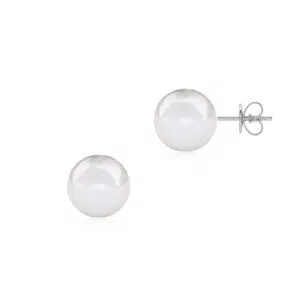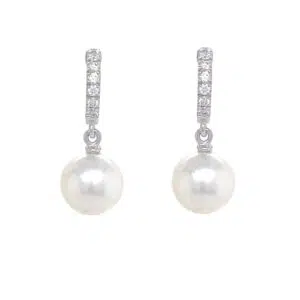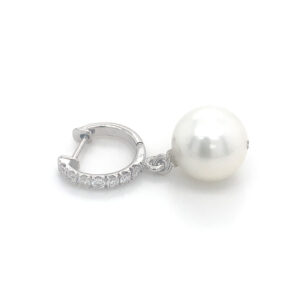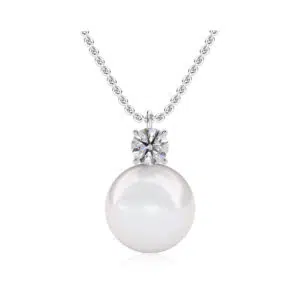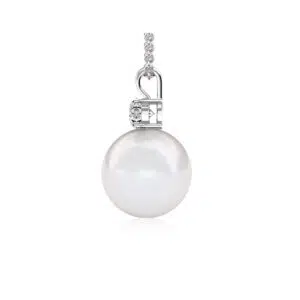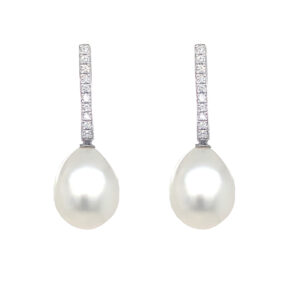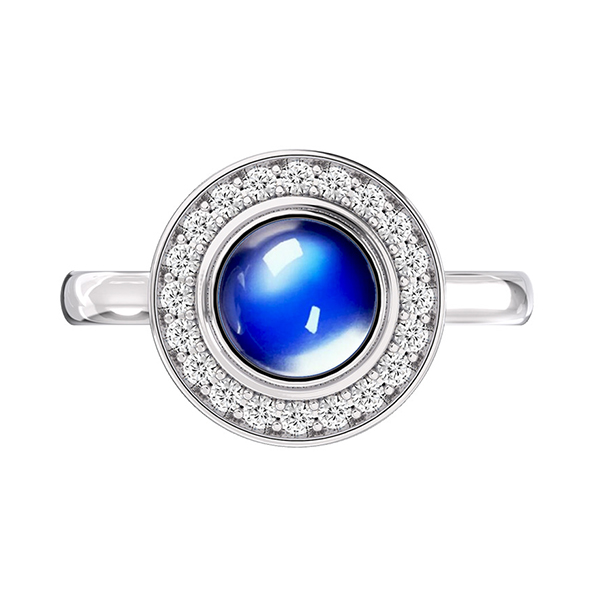June is distinguished by the unique honour of having three official birthstones, each offering its own rare beauty and profound significance: the timeless elegance of pearls, the mystical allure of moonstone, and the extraordinary colour-changing brilliance of alexandrite. From nature’s oceanic treasures to gems of optical enchantment, each stone serves as a reflection of individuality, transformation, and enduring style. Whether you are captivated by the refined tradition of pearl jewellery, the celestial glow of moonstone, or the exceptional rarity of alexandrite, Waldemar Jewellers invites you to explore these remarkable gemstones through our bespoke creations.
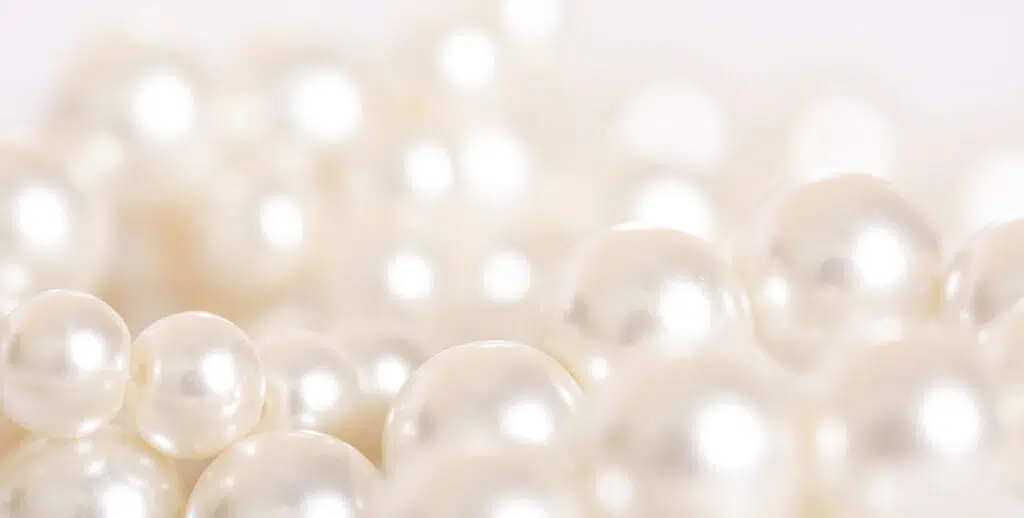
JUNE BIRTHSTONE PEARL
The Rare Beauty of June Birthstone
Graceful, lustrous, and steeped in timeless elegance, the pearl holds the honour of being June’s traditional birthstone. Unlike other gemstones forged from minerals in the earth, pearls are organic treasures — born from the heart of living molluscs and polished by nature itself. This rare origin gives pearls their unmistakable glow and deep symbolism, long associated with purity, wisdom, love, and the calming strength of femininity.
For centuries, pearls have adorned royalty and graced ceremonial attire, becoming enduring symbols of sophistication and serenity. From Cleopatra’s lavish displays to the poised strands worn by modern brides, pearls have always carried an air of quiet luxury. Today, their appeal endures not just for their beauty, but for the way they connect wearer to meaning — a birthstone as elegant as it is emotive.
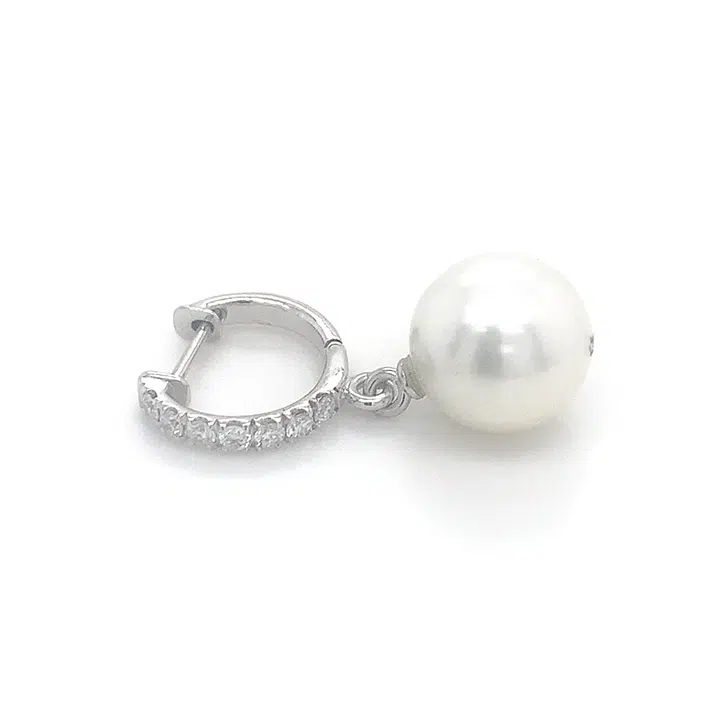
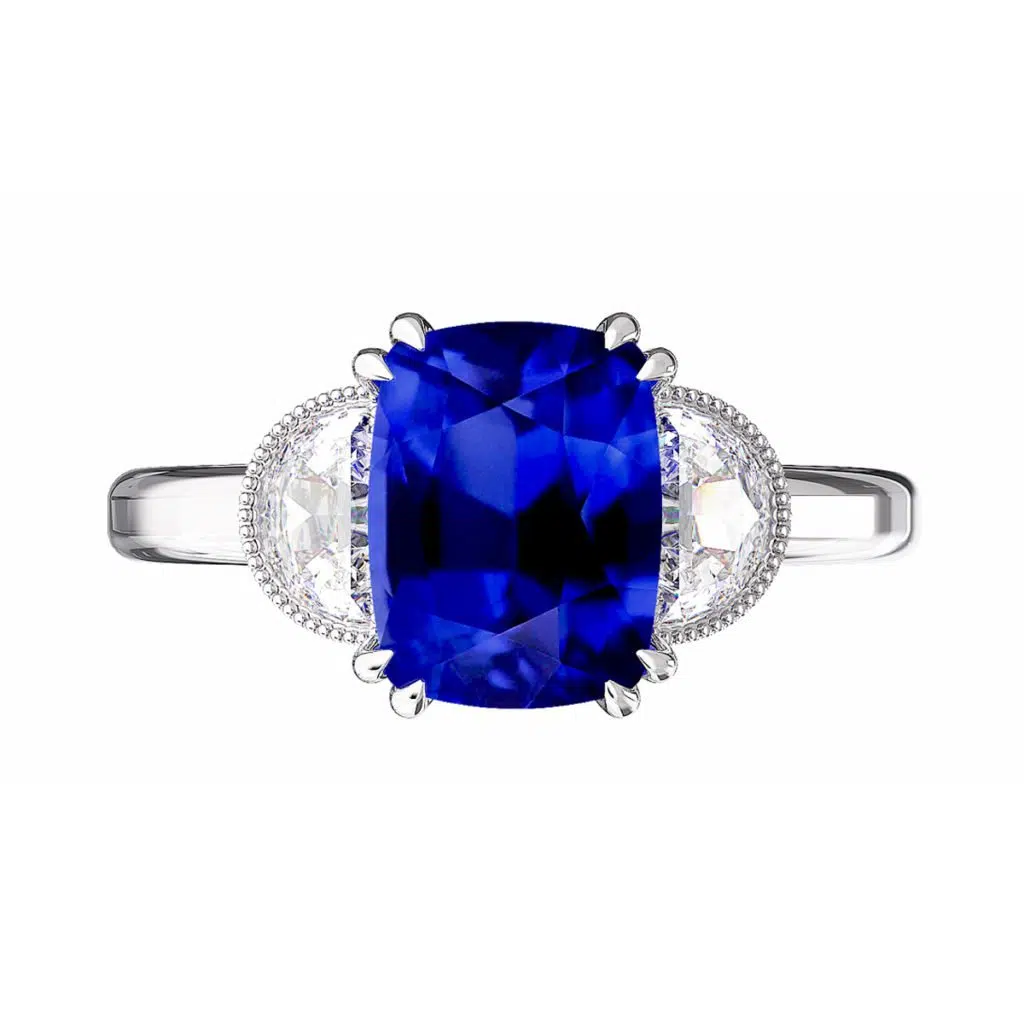
But June is unique. In addition to the pearl, two equally mesmerising alternatives have joined the list of official birthstones: alexandrite, the rare, colour-shifting gem that dances between green and red depending on the light, and moonstone, a mystical mineral admired for its dreamy, celestial shimmer. Each gem offers something different — a chance to express identity, emotion, and personal taste through jewellery.
In this guide, we begin with pearl — the timeless core of June’s gem trio — before exploring the modern allure of alexandrite and moonstone. Whether you’re seeking a traditional keepsake or something more mysterious and modern, June’s birthstones invite you to discover a piece of yourself in every stone.
Pearl: The Timeless Treasure of the Sea
Few gemstones possess the quiet majesty and natural beauty of the pearl. As June’s original and most iconic birthstone, the pearl is unlike any other gem — not mined from the earth, but formed within the soft tissue of living molluscs. This organic origin gives pearls a unique lustre, known as orient, that seems to glow from within. Their delicate sheen and rounded elegance have captivated civilisations for thousands of years, making pearls a powerful symbol of purity, wisdom, love, and inner peace.
How Pearls Are Formed
Natural pearls occur when a foreign particle enters the shell of an oyster or mollusc, prompting the creature to coat the irritant in layers of nacre — the same substance that forms its shell. Over time, these layers build into a smooth, iridescent sphere. While natural pearls are exceedingly rare today, most of the pearls used in fine jewellery are cultured — grown under carefully controlled conditions in oyster farms that mirror the natural process.
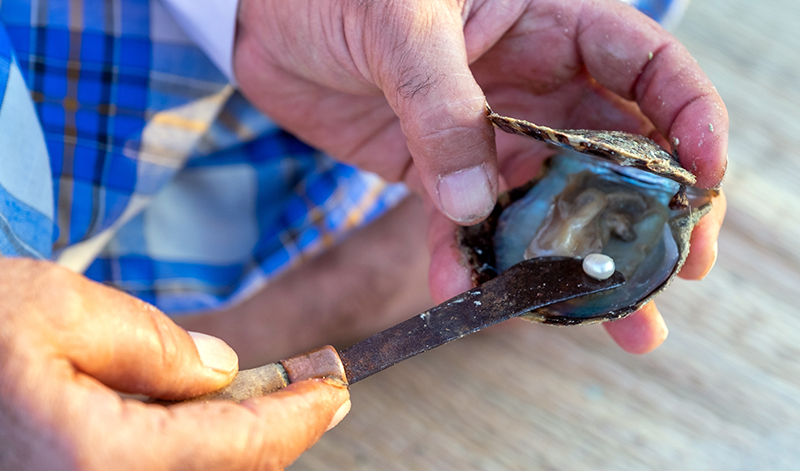
Types of Pearls
There are several types of pearls, each offering a unique look and character :
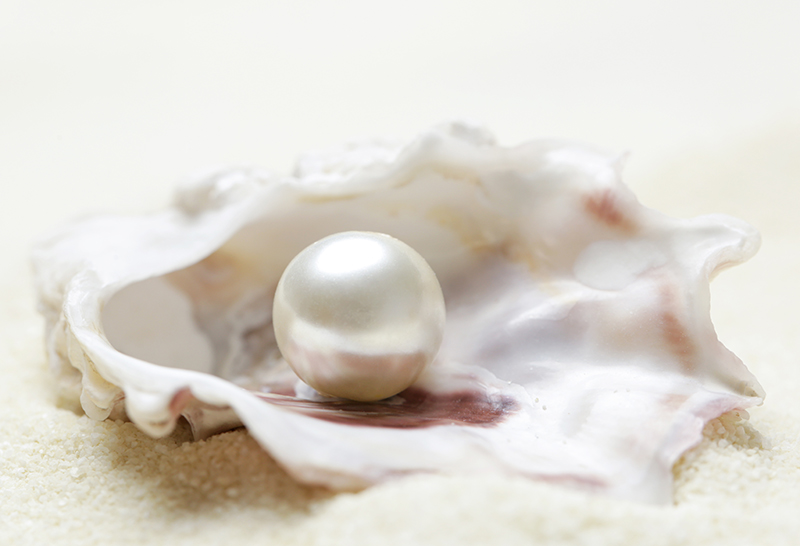
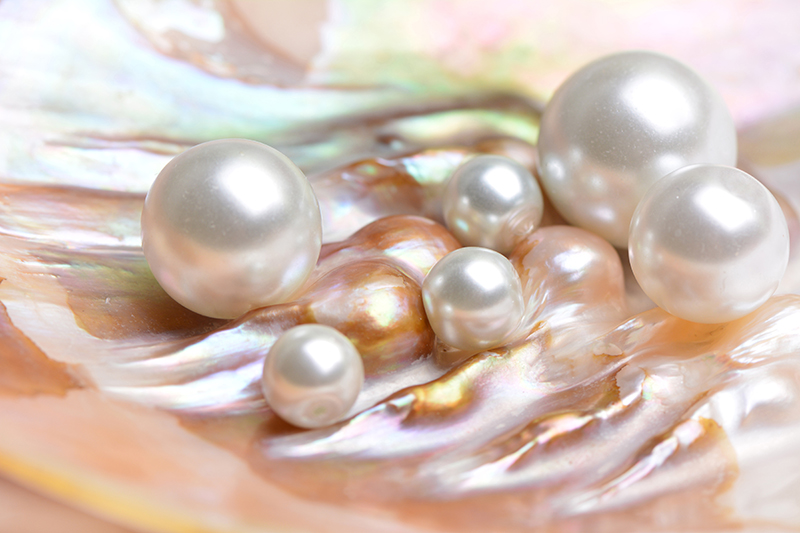
Akoya Pearls: Classic, round white pearls with mirror-like lustre — a favourite for timeless necklaces and bridal jewellery.
South Sea Pearls: Among the largest and most luxurious pearls, found in shades of white, silver, and gold.
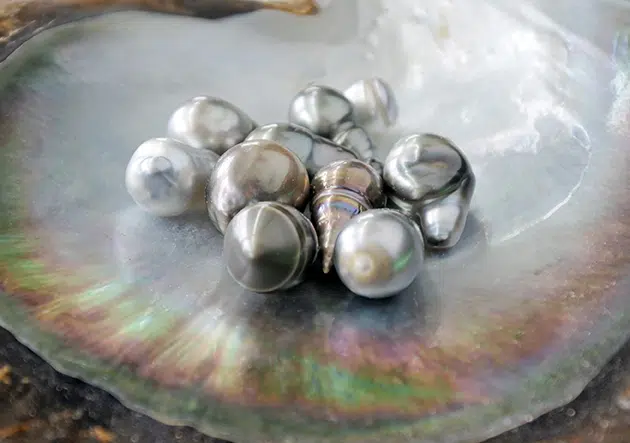
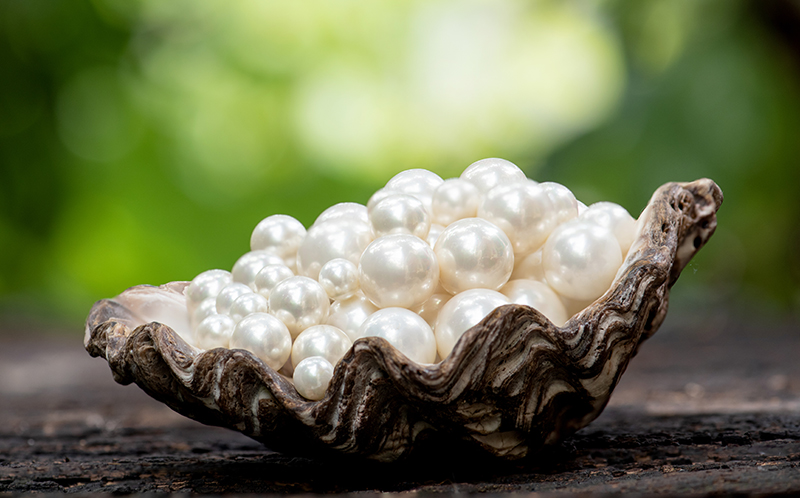
Tahitian Pearls: Exotic and naturally dark, often ranging from peacock green to charcoal grey.
Freshwater Pearls: Cultured in lakes and rivers, these pearls are more affordable and versatile in shape and colour.
Symbolism and Legacy
Throughout history, pearls have been associated with the moon, femininity, and divine wisdom. In Ancient China, they were believed to offer protection and bring prosperity. In Ancient Rome, only the elite could wear them, while in medieval Europe, pearls were a symbol of modesty and virtue. Even today, pearls are chosen for bridal jewellery, milestone birthdays, and heirloom gifts — their symbolism as rich as their sheen.
Pearls transcend trends. Whether styled as a minimalist stud earring, a statement strand, or set into a bespoke Waldemar piece, they offer a natural grace that’s both timeless and deeply personal — a true reflection of the wearer’s elegance and spirit.
Pearl Jewellery Trends in 2025
In 2025, pearl jewellery is experiencing a renaissance, blending timeless elegance with contemporary design. Here’s an overview of the key trends shaping pearl jewellery this year:
Baroque and Sculptural Pearls
Baroque pearls, celebrated for their unique, irregular shapes, are at the forefront of jewellery design. Their organic forms add a modern twist to classic pieces, making them ideal for statement earrings, necklaces, and rings. Designers are embracing these asymmetrical pearls to create pieces that exude individuality and artistic flair.
Layered and Mixed-Material Designs
Layering pearl necklaces with chains of varying lengths and materials is a prominent trend. Combining pearls with metals like gold and silver, as well as incorporating other gemstones, offers a versatile and personalised look. This approach allows for both minimalist and bold styling, catering to diverse fashion preferences.
Gender-Inclusive Styling
Pearls are transcending traditional gender norms, becoming a staple in men’s and unisex jewellery collections. From single pearl earrings to layered necklaces, pearls are being styled in ways that appeal to all genders, reflecting a broader movement towards inclusivity in fashion.
Embracing Colour and Unconventional Hues
While classic white pearls remain popular, there’s a growing interest in pearls with unique colours and overtones. Tahitian pearls with cherry or peacock hues, golden South Sea pearls, and freshwater pearls in pastel shades are gaining popularity. These colourful options add a contemporary edge to pearl jewellery, allowing for more personalised and expressive pieces.
Statement and Oversized Pieces
Designers are creating bold, oversized pearl jewellery that commands attention. From chunky necklaces to large drop earrings, these pieces are designed to be the focal point of an outfit. This trend reflects a shift towards more expressive and daring jewellery choices.
Sustainable and Ethical Sourcing
Consumers are increasingly valuing sustainability and ethical practices in jewellery production. Brands are responding by ensuring their pearls are sourced responsibly, focusing on environmental stewardship and fair labour practices. This commitment to sustainability adds depth and value to pearl jewellery, aligning with the values of modern consumers.
Want to know more about pearls and how to choose the perfect piece?
Dive into our comprehensive Pearl Guide to uncover everything from types and grading to styling tips.
Handpicked Pearl Jewellery You’ll Love
We’ve curated a selection of stunning pearl products just for you. Browse through our exclusive collection and find the piece that speaks to you.
Each piece is carefully crafted to celebrate the beauty and individuality of pearls—whether for a special occasion or a timeless gift.
Introducing June’s Modern Birthstone Alternatives : Alexandrite & Moonstone
While Pearl is celebrated as the traditional birthstone of June, modern birthstone charts have welcomed two extraordinary additions: Alexandrite and Moonstone. Each offers something wonderfully different — from optical marvels to mystical energy — allowing those born in June to choose a gem that best reflects their personality, values, and style.
Alexandrite: The Gem of Duality and Change
Discovered in Russia’s Ural Mountains in the 1830s, alexandrite is renowned for its rare and magical ability to change colour, shifting from emerald green in daylight to reddish-purple under incandescent light. This remarkable optical effect, known as the alexandrite effect, makes the stone a symbol of transformation, adaptability, and balance.
Due to its rarity and unique phenomenon, natural alexandrite is considered more valuable than many diamonds, and often reserved for fine, custom-crafted pieces. For those who crave something less traditional yet deeply meaningful, alexandrite is an exceptional choice — particularly for those experiencing personal growth or transition.
Moonstone: The Dreamy Stone of Intuition and Emotion
Softly glowing with a mysterious shimmer, moonstone captures the magic of moonlight within its translucent body. Its distinctive visual effect — called adularescence — creates a floating light that glides across the surface, evoking a calm, ethereal beauty. Long associated with feminine energy, emotional clarity, and intuition, moonstone is deeply connected to spiritual and holistic practices.
Moonstone has been revered across cultures, from India to Ancient Rome, as a protective and healing gem. In contemporary jewellery, it’s often set in rose gold or sterling silver, and popular in bohemian, celestial, and romantic designs. Its accessibility and soft, mystical energy make it a beautiful alternative for June-born individuals who connect with more introspective or emotional themes.
Alexandrite: A Rare Wonder of Light and Shadow
Often described as “an emerald by day and a ruby by night,” alexandrite is one of the rarest and most fascinating gemstones in the world — and a modern June birthstone unlike any other. Its most striking feature is its remarkable colour-change phenomenon, where the stone appears bluish-green in natural daylight and shifts to purplish-red under incandescent or candlelight. This optical rarity has made alexandrite a symbol of duality, transformation, and inner balance.
A Gem of Imperial Origins
First discovered in the 1830s in Russia’s Ural Mountains, alexandrite was named after Tsar Alexander II and quickly became associated with Russian nobility. Its colours — green and red — matched the imperial colours of the Russian military, further adding to its patriotic and prestigious status. Today, top-quality alexandrites are mined in Sri Lanka, Brazil, Tanzania, and Madagascar, but remain exceedingly scarce.
Rarity and Value
Natural alexandrite is considered rarer than most diamonds, and large stones over one carat can command exceptionally high prices. The value is heavily influenced by the strength and contrast of its colour change, clarity, and cut. Lab-created alexandrites offer a more affordable alternative, replicating the dramatic shift in hue while retaining the mystical charm.
Symbolism and Meaning
Its ability to shift depending on light, alexandrite, is often linked to personal growth, emotional resilience, and adaptability. It resonates with those navigating life changes or seeking to harmonise different aspects of themselves. In metaphysical beliefs, it’s also considered a stone of luck, creativity, and spiritual insight.
Jewellery Appeal
Alexandrite’s dynamic nature makes it a show-stopping centrepiece for engagement rings, pendants, and custom-designed jewellery. Its rarity and vibrant shift in tone offer an air of mystery and exclusivity — ideal for those who seek something truly distinctive and symbolic.
Moonstone: The Ethereal Stone of Emotion and Intuition
Soft, luminous, and full of mystery, moonstone is one of June’s most enchanting birthstones. With its shimmering glow and celestial associations, moonstone has long been revered as a gem of feminine energy, emotional clarity, and spiritual connection. It exudes a gentle, almost dreamlike aura — offering a quiet strength that contrasts the boldness of other gemstones.
A Glow Born of Light
Moonstone’s signature optical effect, called adularescence, gives it a glowing, floating light that appears to move across the surface of the gem. This unique phenomenon is caused by light scattering between microscopic layers of feldspar within the stone. The result is a pearly or bluish shimmer that evokes the soft, shifting light of the moon.
Moonstones are typically colourless or soft white, but can also be found in shades of peach, grey, brown, and even blue or rainbow varieties. The most prized stones are almost transparent with a strong blue sheen.
Mythology and Symbolism
In ancient India, moonstone was believed to be solidified moonlight, and was sacred to lovers and dreamers alike. Romans associated it with Diana, the goddess of the moon, femininity, and intuition. Across cultures, it has been linked to emotional healing, new beginnings, and inner harmony — making it an especially meaningful gem for those experiencing transformation or seeking calm in their lives.
Jewellery and Modern Appeal
In 2025, moonstone continues to shine in bohemian, spiritual, and celestial-themed jewellery. It is often set in silver or rose gold, complementing its soft glow, and used in delicate rings, stackable bands, layered necklaces, and even bespoke engagement rings. Designers are also combining moonstone with other feminine gems such as rose quartz or pearls for added depth and symbolism.
More accessible than alexandrite and gentler than most traditional gems, moonstone is perfect for those who want their jewellery to carry a quiet magic — a subtle, soulful glow that speaks to intuition, emotion, and personal energy.
Choosing the Perfect June Birthstone
With three beautiful and distinct gemstones to choose from, June-born individuals are truly spoiled for choice. Whether you’re selecting a piece for yourself or gifting someone special, understanding the unique characteristics of pearl, alexandrite, and moonstone can help you find the gem that resonates most deeply.
Each of these birthstones speaks to different personalities, energies, and style sensibilities — from timeless elegance and bold transformation to soft mysticism.
Here’s a quick comparison to help guide your decision:
Feature
Pearl
Alexandrite
Moonstone
Origin
Organic, formed in molluscs
Mineral, discovered in Russia
Feldspar mineral
Appearance
Smooth, lustrous white or soft hues
Colour-changing: green to red
Translucent with a blue or rainbow glow
Symbolism
Purity, wisdom, calm, love
Change, creativity, balance, strength
Intuition, emotion, femininity, protection
Rarity
Cultured pearls widely available
Exceptionally rare and valuable
Readily available and affordable
Durability
Delicate (Mohs 2.5–4.5)
Durable (Mohs 8.5)
Fairly soft (Mohs 6–6.5)
Best For
Classic, elegant styles and bridal jewellery
Unique, luxurious statement pieces
Mystical, bohemian, or romantic looks
How to Decide?
- Choose Pearl if you’re drawn to classic beauty, gentle energy, and timeless sophistication.
- Choose Alexandrite if you seek rarity, depth, and a gem that reflects your evolving journey.
- Choose Moonstone if you connect with the moon, intuition, or a more mystical and emotional aesthetic.
For those who feel connected to more than one, custom jewellery that combines two or all three stones can create a truly personal piece — one that represents the layered facets of your personality, energy, and life story.
Jewellery Care Tips: Pearl, Alexandrite & Moonstone
Each of June’s birthstones is unique not only in appearance and meaning, but also in the way it should be cared for. To preserve their natural beauty and ensure your jewellery lasts for years to come, it’s important to understand the specific needs of pearl, alexandrite, and moonstone.
Pearls are the most delicate of the three. As organic gems with a hardness of just 2.5–4.5 on the Mohs scale, they are vulnerable to scratches, heat, and chemicals. Always follow the “last on, first off” rule — put your pearls on after applying makeup, perfume, or hairspray, and remove them before undressing. Avoid exposing pearls to moisture or cleaning agents, and store them separately in a soft pouch or cloth to prevent contact with harder jewellery. Pearls benefit from occasional wear, as the natural oils from your skin help maintain their lustre.
Alexandrite, by contrast, is a much more durable gemstone, ranking 8.5 on the Mohs scale. It’s suitable for everyday wear, including in rings and engagement pieces. However, it’s still recommended to avoid harsh knocks or prolonged exposure to high temperatures. Clean alexandrite jewellery gently using a soft toothbrush with warm, soapy water. Ultrasonic cleaners are generally safe for natural alexandrite but should be avoided if the gem contains inclusions or has undergone treatment.
Moonstone sits between the two in terms of hardness, measuring 6 to 6.5 on the Mohs scale. While it can be worn daily with care, it’s more susceptible to scratching and should be stored away from harder gems like diamonds or sapphires. Moonstones can also fracture if dropped or knocked against hard surfaces. Clean them gently with warm water and a soft cloth — avoid ultrasonic cleaners and steam. For long-lasting shimmer, store moonstone pieces in soft-lined boxes or pouches, away from extreme heat or sudden changes in temperature.
No matter which stone you wear, regular care and mindful handling will ensure that your jewellery remains as captivating as the day it was crafted — a precious symbol of your story, protected and cherished.
Crafting Meaningful Jewellery with Waldemar Jewellers
At Waldemar Jewellers, we understand that jewellery is more than just an accessory — it’s a reflection of who you are. That’s why we offer bespoke birthstone designs, handcrafted to capture your story with intention and elegance.
Whether you’re drawn to the timeless glow of pearls, the rare brilliance of alexandrite, or the soft magic of moonstone, our custom-made pieces allow you to create something truly personal and meaningful.
Visit our Sydney studio or connect with us online to begin your bespoke jewellery journey — where every detail is crafted with care, and every gemstone tells a story.

